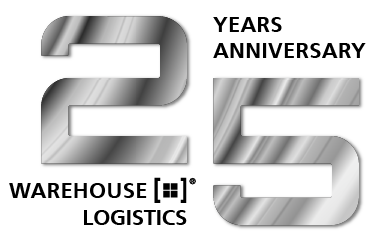News
(Technical) Wholesale and the WMS SuPCIS-L8
02.08.2021
Our wholesalers particularly appreciate these module components of our SuPCIS-L8 software!
A diverse range of articles from small parts to large-volume goods to cable drums requires maximum flexibility in warehousing and order picking for every company. Of course, the requirements of each customer and the conditions of each warehouse can be described differently, but we would like to give you an understanding of three "typical" processes that our wholesalers particularly appreciate in the SuPCIS-L8 warehouse management software: the various integration options for different picking strategies (e.g. cross-docking and special picking), the configurable process of drum management and cable cutting in SuPCIS-L8 as well as the option of the integrated dashboard for route departure.
Easier and more efficient flow of goods in the warehouse
The right technology for every application - the different software modules of SuPCIS-L8 make it possible to integrate different picking strategies in your warehouse and thus select the appropriate material flow. For example, individual orders with large-volume articles can be picked and made ready for dispatch by the warehouse staff directly at the warehouse shelf. As a rule, it makes sense to support this process in the warehouse with the use of MDE devices and to provide the warehouse employees with the necessary information in this way.
In contrast, a route-optimised picking aisle is often the best solution for picking small parts. In this context, a multi-order picking process integrated in WMS SuPCIS-L8 using the pick-pack method makes sense. Here, the warehouse management system optimises the processes with an intelligent logic: the shipping volume is calculated by SuPCIS-L8 before the picking process and the picking trolley is equipped with the appropriate shipping containers. Matching orders are selected so that routes are kept to a minimum. The employee picks directly into the shipping containers - so there is no need to repack at the packing stations.
But in addition to handling large-volume articles and small parts, wholesalers also must deal with the handling of large quantities of goods daily. In addition to the large number of incoming and outgoing goods, there are special challenges due to the high proportion of goods on order, which must be handled quickly and efficiently. This is because the storage volume is often insufficient - not to mention the additional costs that would be incurred by short-term storage and subsequent removal. Thanks to the cross-docking process that can be individually configured in SuPCIS-L8, the goods in question can be further processed directly after receipt at the goods receiving department. In practice, this means that this stock is not even stored in the warehouse but is immediately packed again according to the order via cross-docking at goods receipt, transported to the tour location and dispatched to the customer.
Another advantage in SuPCIS-L8 is the configurable process of special picking, which is particularly suitable for wholesale customers who are active in the project business. It can happen that the customer orders a certain contingent of goods - e.g., 200 lamps to equip a construction site - but does not yet know exactly when and to what extent he must call off the ordered goods. It is therefore possible to mark goods for the respective customer project as call-off goods in the system, to buffer them and to make the desired articles available when the customer calls them off. Depending on the company and its warehouse structures, these goods can then either be stored in a special picking area or (digitally) specially marked in the general warehouse. In both cases, the retrieved goods are made ready for dispatch directly in the storage area. This special picking process can be used with the help of SuPCIS-L8 for both stored goods and non-stored goods.
Cable drum management and cable cutting in SuPCIS-L8
If you need support in managing your cable drums, this is a possible solution: via an interface to the ERP system, the drums are mirrored in our WMS. Both length and drum type are known to the system. The system also receives the information on the individual picking orders for cables via the ERP. In this way, the employees in the warehouse are always informed about the type and length of the required cables, can cut the desired cable length to length and prepare it directly for dispatch. For the user, this means maximum manual control at the cable cut. If required, the WMS can also provide additional support through automatic replenishment logic: if a cable drum on the pallet on the shelf becomes empty, this is acknowledged, the WMS initiates a replenishment order, and another drum is brought to the front position. In this way, the WMS automatically ensures short-term stock availability at the cutting station.
Creating a Transparent Overview with the Dashboard for Tour Departure in SuPCIS-L8
Customers who drive a large number of tours with (usually) their own vehicle fleet must be supported both in the control by software and in the visualisation. The dashboards provide a precise overview of the respective status of the tour and in this way allow to see in real time to what extent the individual orders have already been completely processed and booked on a tour. In this context, our WMS SuPCIS-L8 offers two different configuration options for the status display: in the "standard view", the view is occupied with 100% - if the bar is completely green, the tour volume for the respective tour has been reached and the truck can start its tour.
Alternatively, it is possible to display the status with stacked bars. The advantage of this view is that the user can see the planned orders and the status of the individual tour based on these coloured bars. The same applies here: if the green bar is the same size as the blue bar, the truck can start its tour.
